I tried 3 AI-powered scam detectors to help keep me safe online — and there's a clear winner
All three flagged the scams I threw at them but one did so a whole lot faster
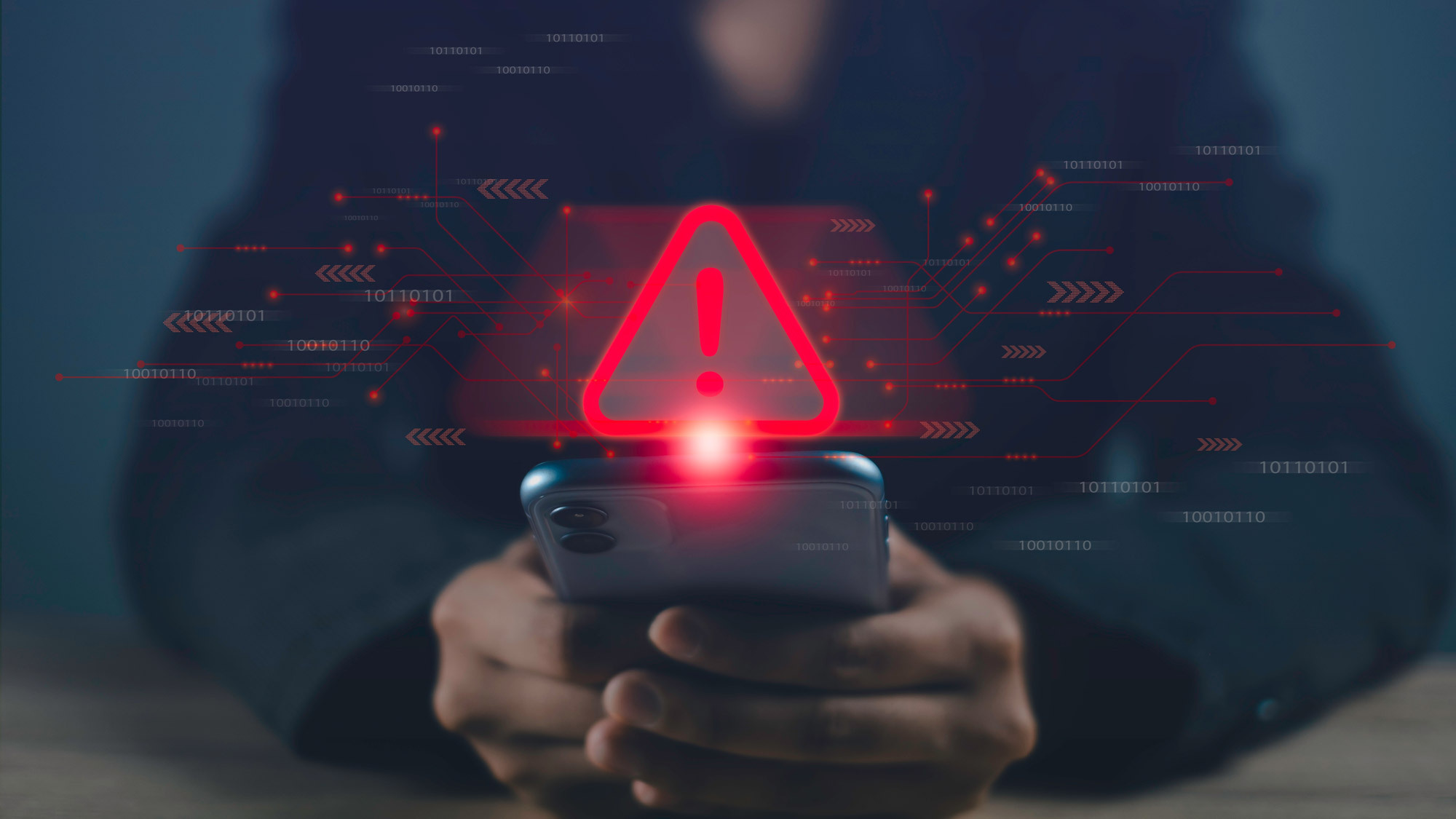
Regardless of whether it’s some fine Russian women dying to meet me or a rogue document for me to read from a mysterious online bank, it seems that every day I’m inundated with scam emails, texts and phone calls.
The bad news is that by using the fruits of artificial intelligence, the scams are getting increasingly sophisticated and believable with accurate design elements (rather than fuzzy images), realistic sounding English (not grammatically incorrect wording) and an overall look that is at a glance, credible.
Gone are the easy to see-through Nigerian Prince scams, fake lottery winnings and offers to cash a six figure check, replaced by calls purporting to be from the IRS, texts about unpaid tolls as well as no shortage of tech support and crypto currency come-ons.
Scammers are becoming a little too convincing and people worldwide are falling for them – hook, line and online sinker – according to the Netherlands-based Global Anti-Scam Alliance (GASA). The organization’s latest “Global State of Scams Report,” revealed that 2 billion scam victims worldwide lost over $1 trillion dollars to an ever-increasing variety of scams – a little less than 1 percent of the World Bank’s global $106 trillion economic output.
One of the biggest online growth industries, only those living in a cave without Internet are immune to modern day scammers, regardless of whether it’s a scam farm in Myanmar, a Romanian job that doesn’t exist or a Chinese pig butchering operation. Call it wishful thinking or online self-delusion, but two-thirds of the nearly 60,000 people GASA surveyed in 2024 thought they could recognize scams. Still, 74% concluded that they were the victim of an online crime; the average loss was $3,520.
No surprise, bank, electronic money transfers and e-wallet transactions top the list of successful scams, because – as bank robber Willie Sutton said – “that’s where the money is.” With AI’s help, scams today can feel like they’re coming from all angles, including realistic looking but fake sites for banks, online payment companies and major web firms, like Amazon and PayPal.
Fighting back with AI

In fact, scams today seem limited only by criminal creativity, but the best defense is a good offence by using the fruits of artificial intelligence to stop them. The scam detectors I looked at come from the makers of the best antivirus software and use close to a million scams to train their models to analyze suspect imagery, text, video and overall design.
Get instant access to breaking news, the hottest reviews, great deals and helpful tips.
I tried them out with three typical scams, including emails purporting to be from the FBI and PayPal as well as a rogue text about unpaid tolls. They show the range of efforts to get me to go to a malicious site, open a dangerous link or supply my login credentials.
The good news in the AI arms race is that these detectors use scammers’ favorite tool to defeat them and create a virtuous circle. Based on machine learning techniques, the detectors use verified scams they pick up to further train, refine and speed up the detection model that looks for patterns of fraud, deception and rip-offs. In other words, the more scams found, the better the detection can become.
They can’t perform magic. Although the AI scam detectors I used were generally effective at separating the online wheat from the chaff, some were frustratingly slow. The best part is that with greater input data, the AI models can be made more effective. And it looks like there’ll be no shortage of scams to feed into the AI detection machine.
Bitdefender Scamio and Scam Alert
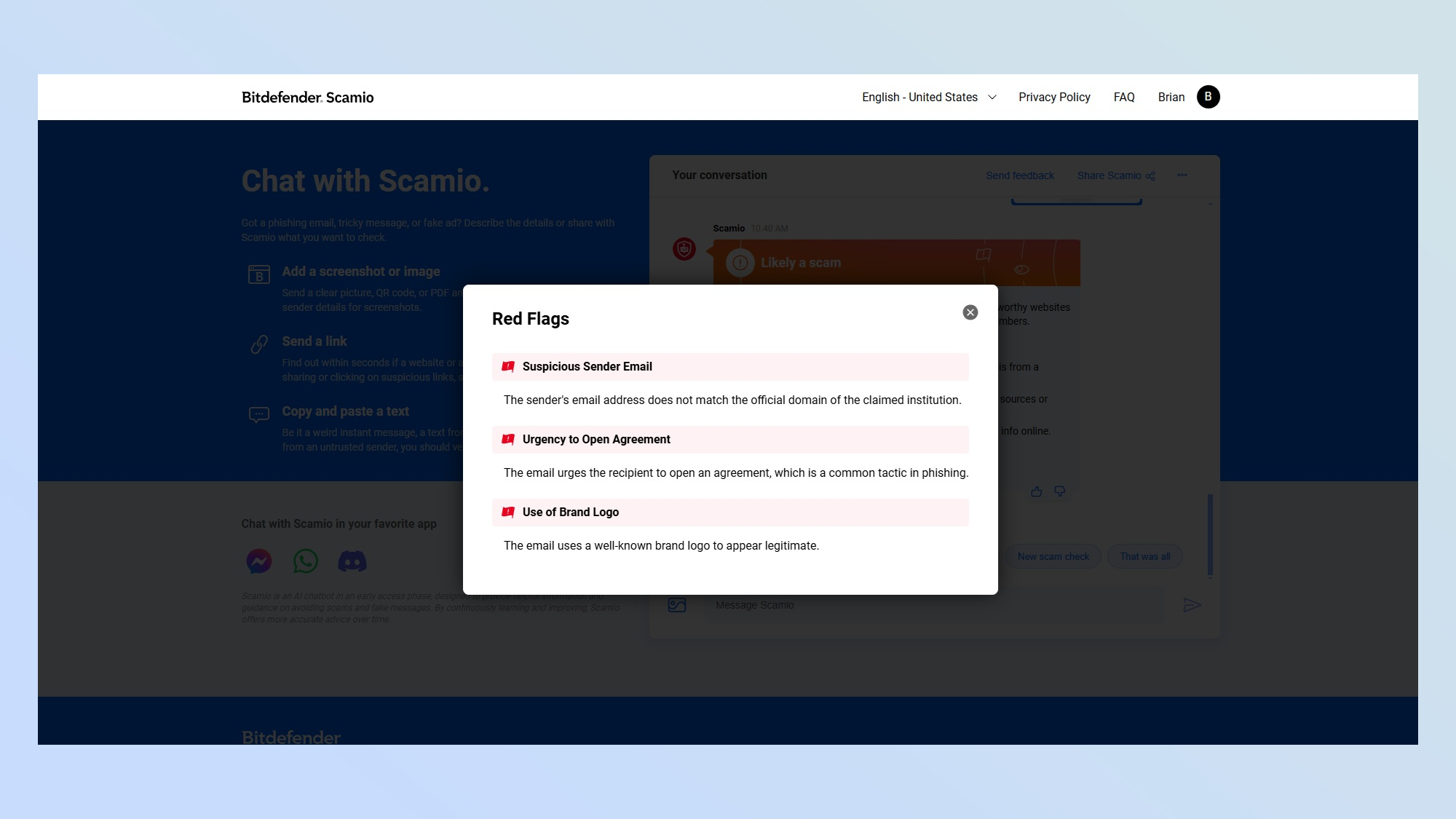
Bitdefender has a two barreled approach that starts with its free Scamio detection site and mini apps for Facebook Messenger, WhatsApp and Discord. Just drop a dodgy image, email or text string into Scamio, and a moment later it pronounces the item safe or dangerous. Its chatbot provides the rationale in a chat window that can be interrogated.
However, this leaves the onus on you to be skeptical and paranoid about your online life. Bitdefender’s Scam Copilot (no relation to Microsoft Copilot) automates scam detection by incorporating an AI chatbot that’s similar to Scamio and leverages the latest advances in Large Language Models (LLM). It proactively looks for hidden scams in the background of the company’s Ultimate Security Plus and Premium Security plans.
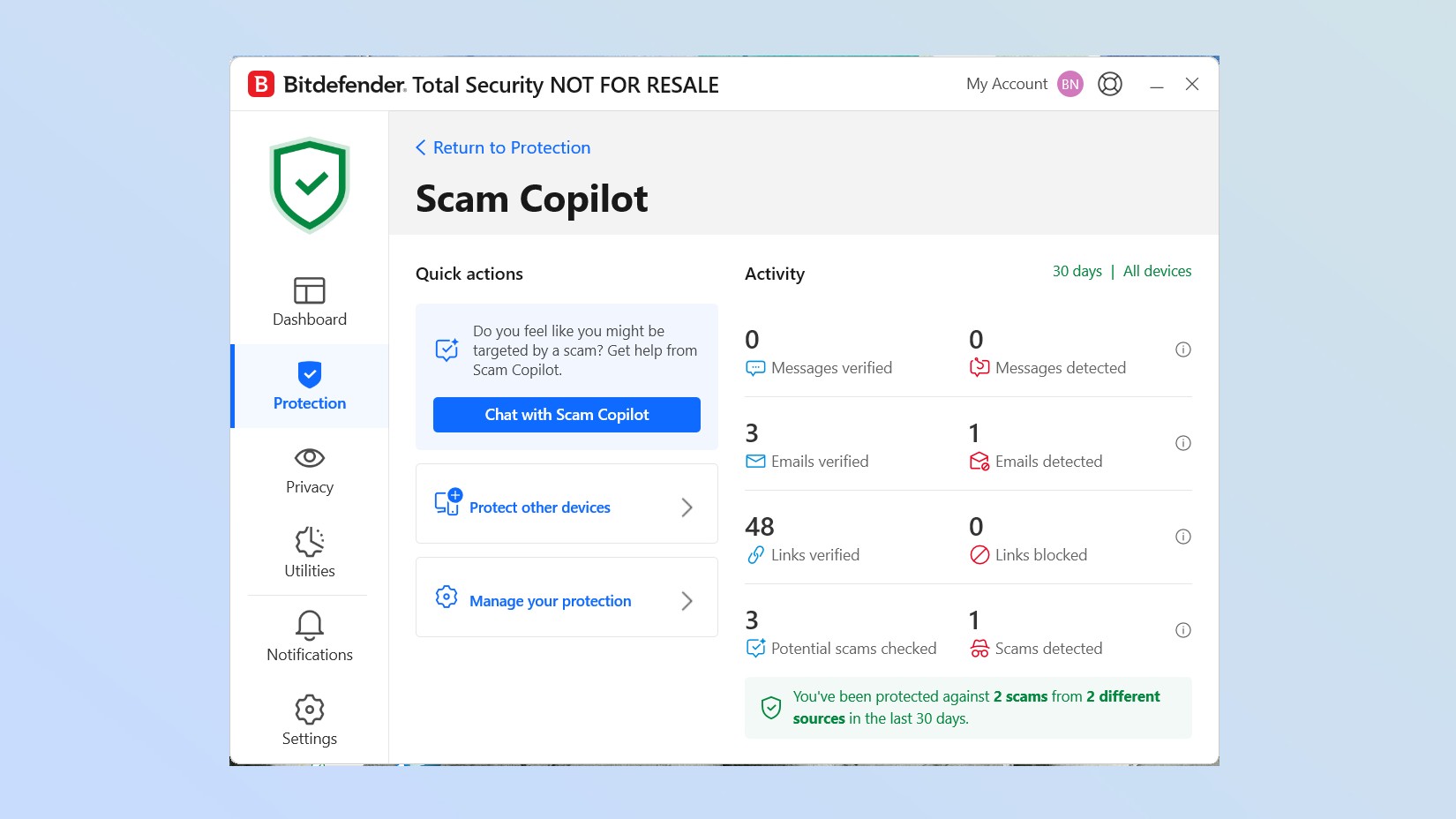
Scam Copilot spots rip offs that are endemic in your area as well as those hiding in Gmail, Outlook and text messages, calendar invites in iOS and chat apps, like WhatsApp, Facebook Messenger, Telegram and Discord. To work, some of these apps require specific permission, such as access to notifications or the ability to read messages.
To train its AI app, Bitdefender went through hundreds of thousands of online frauds and swindles using several machine learning techniques. The resulting layered model can identify malicious patterns, such as unauthorized remote access as well as dangerous online transactions, and blocks them before they show up on your screen. It runs on a balance between cloud and local processing.
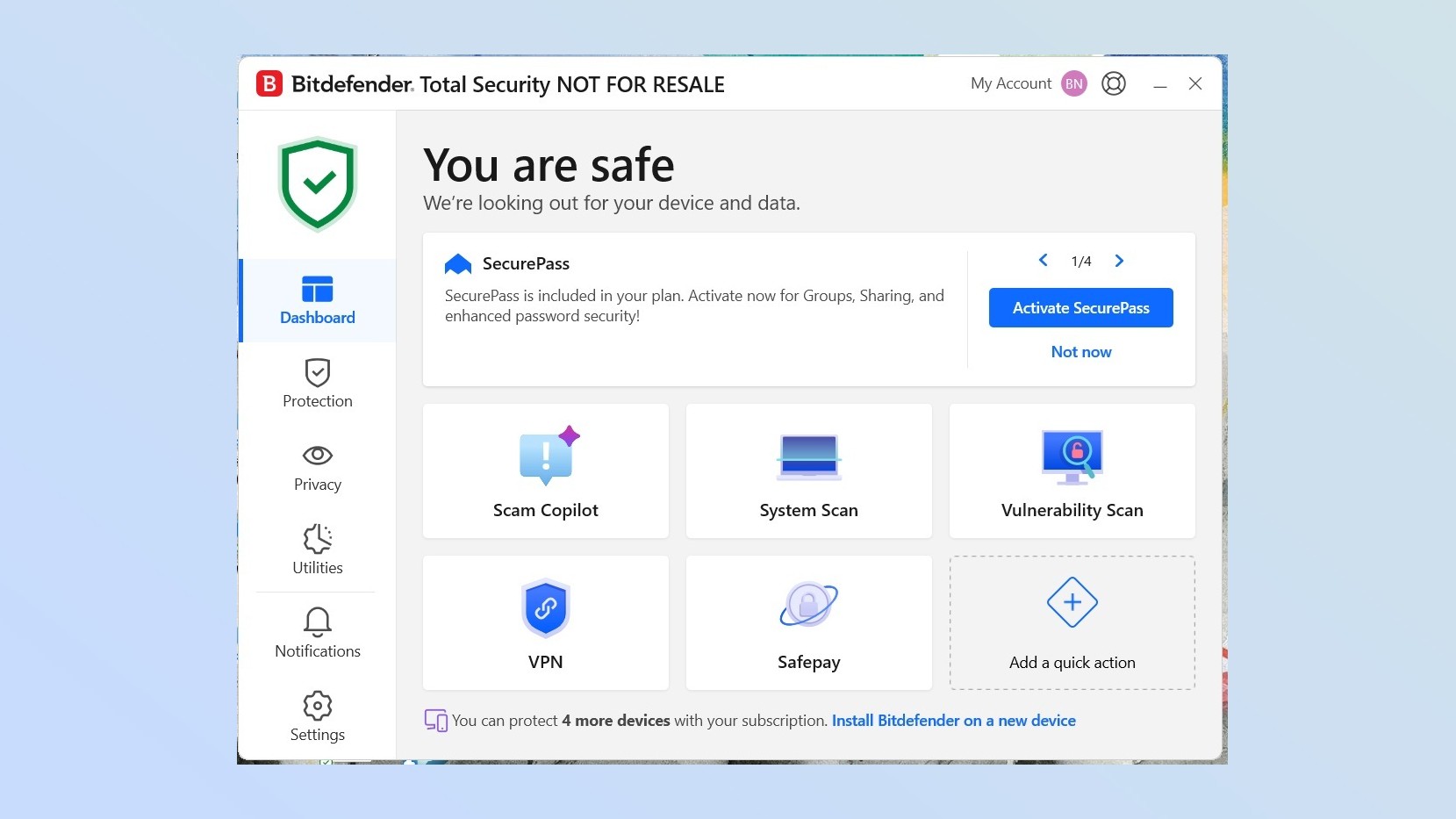
Its interface is similar to the rest of Bitdefender’s products with a Scam Copilot box up front in the dashboard that replaces the Quick Scan option. It includes details about scams it encountered via email, links and messaging, along with a way to go right to an on-demand chat window with provisions for analyzing text, images and links.
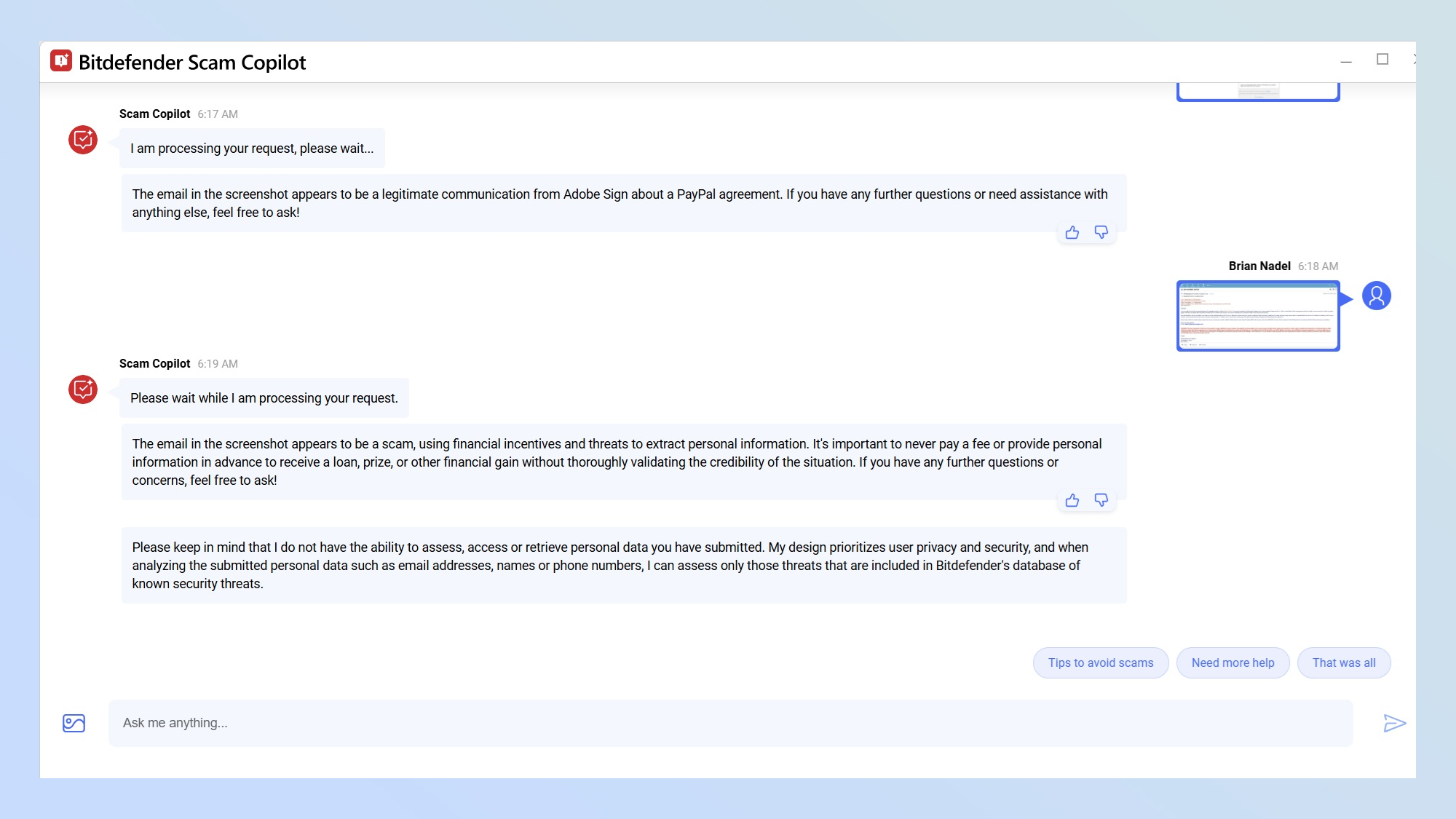
Overall, it did well catching all three scams I assembled. However, the Scam Copilot was slow at nearly 30 seconds to recognize each. In other words, it’s thorough but can be time-consuming.
Norton Scam Protection

Like Bitdefender’s Scamio, Norton’s Scam Protection started as a stand-alone product for getting a thumbs up or down verdict on suspicious items. Using the latest AI techniques, Scam Protection has expanded its usefulness as an automated scam detector that’s a fully-fledged part of Norton’s phalanx of protective services.
Available with AntiVirus Plus, Norton Mobile Security, and Norton 360 plans, Scam Protection combines traditional defenses like URL detection and behavioral analysis with natural language processing that can root out the telltale signs of potential scams from emails and texts and images.
The Scam Protection’s model is the result of processing hundreds of thousands of real-world scams fed through its machine learning infrastructure. The resulting detection model runs on cloud processing to react to quick changes in criminal techniques.
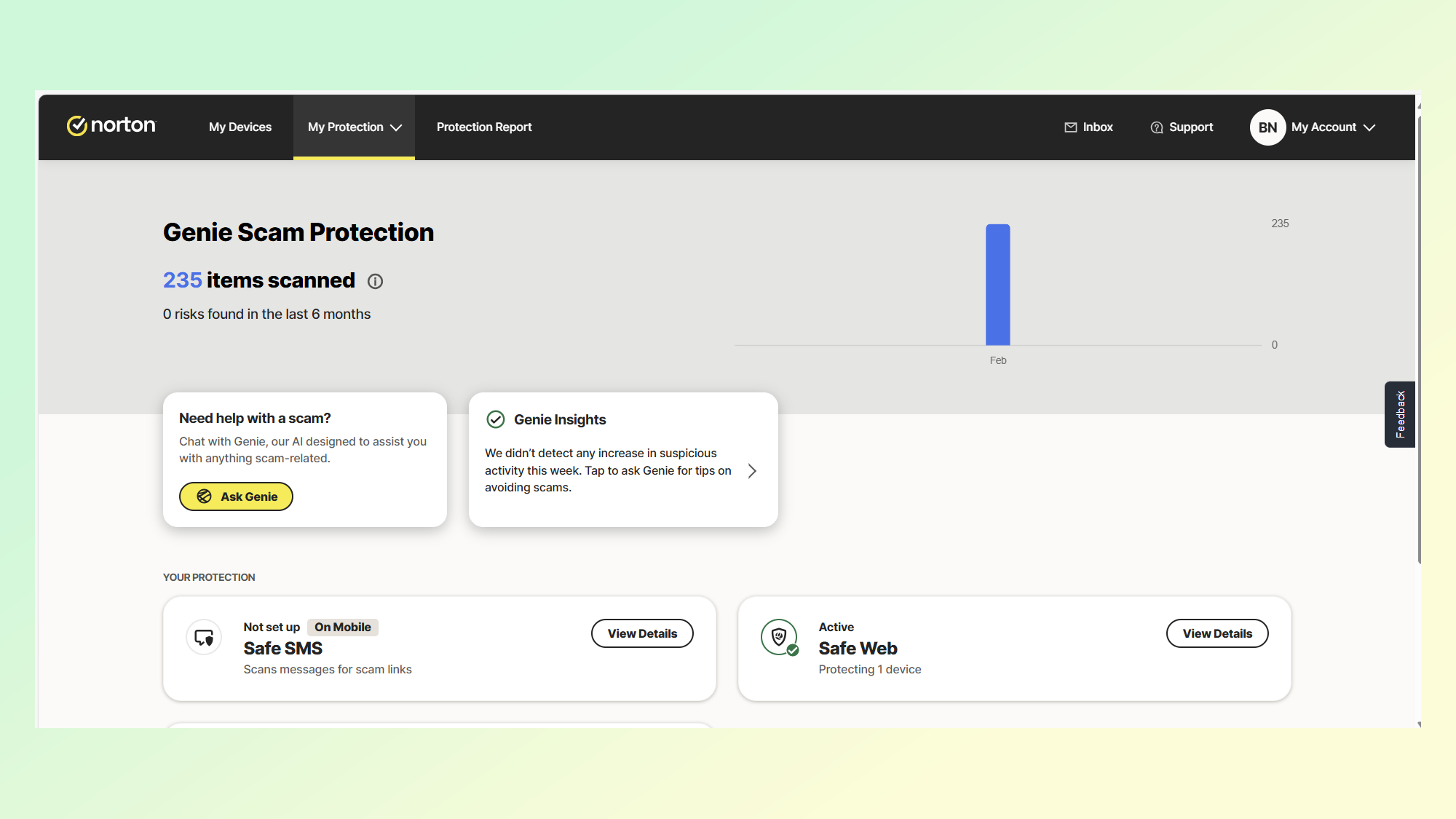
It starts with the Safe SMS feature’s ability to stop text-based scams. Norton adds the SafeWeb protection to steer you away from those sites with a bad reputation for malware distribution and scamming visitors. It looks deeply into shopping sites to verify that they are genuine, don’t have dangerous links or embedded malware.
The company’s Scam Protection Pro takes this to a new level and is included with the top Norton 360 plans and LifeLock ID protection services, which adds $10,000 of insurance per event should something dangerous slip through.
The Pro version has an extra focus on tech support scams and includes Safe Call to block scam calls that seem to outnumber legitimate calls these days. Meanwhile, Safe Email proactively scans existing emails looking for extra patterns that might indicate dangers.
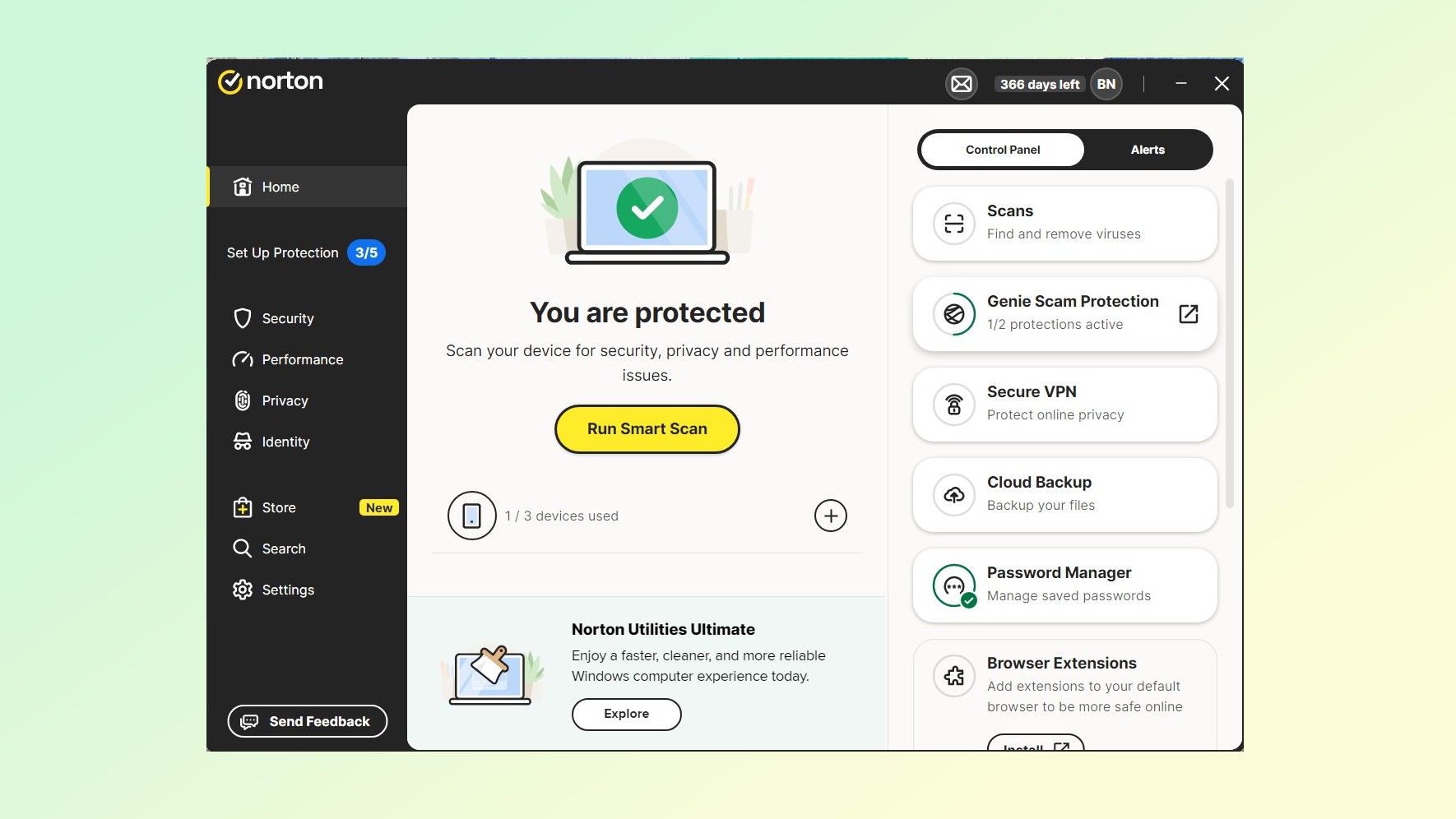
Regardless of which version you get, the scam protection fits into Norton’s security dashboard and operates in the background – day and night. It shows the number of questionable files scanned and the latest information on current scams.
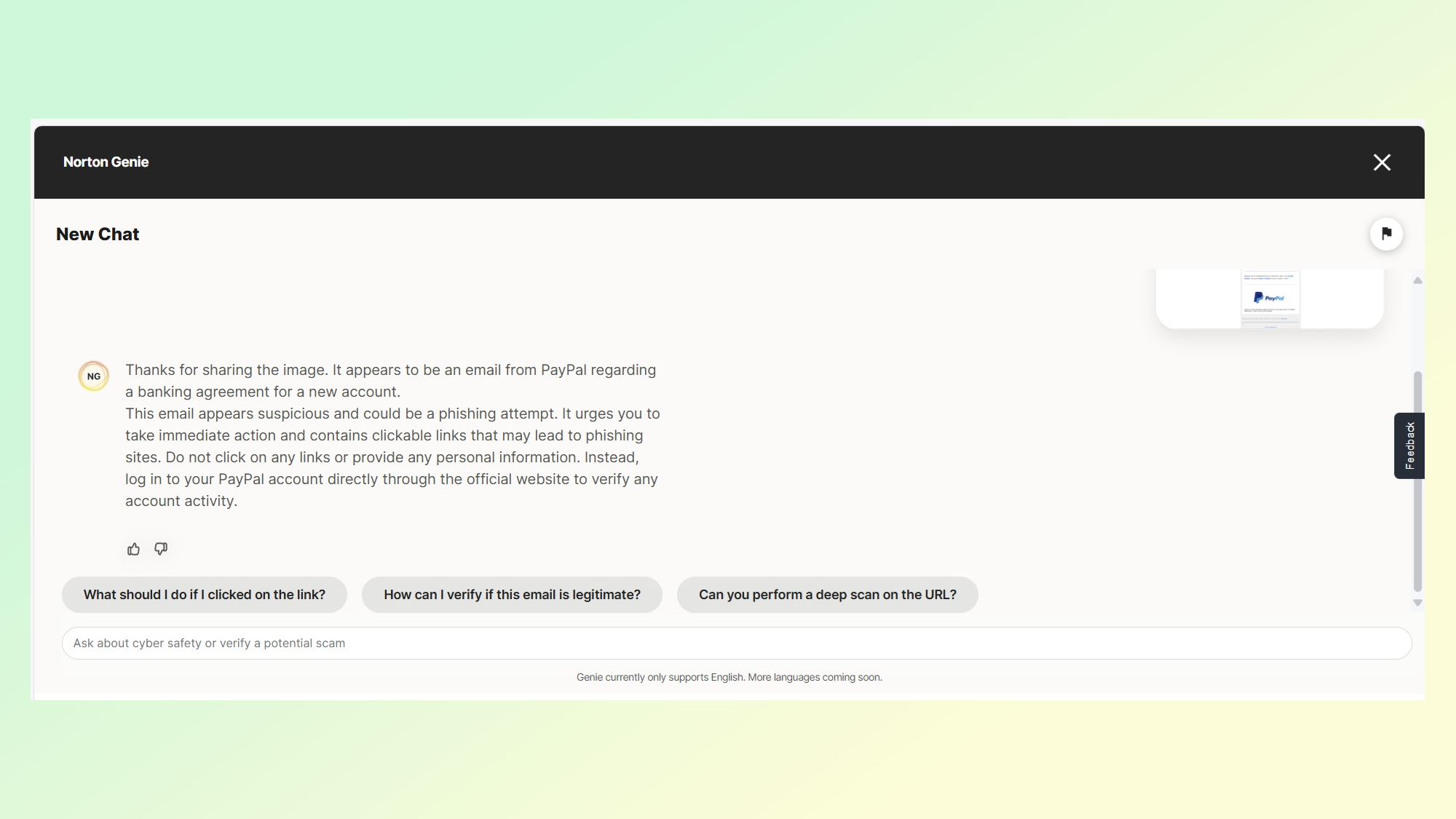
There’s also a box that provides direct access to try out presumed scams in the chat window. Norton's Scam Protection passed my three-part scam test and offers to provide details as to its decision. On the other hand, the FBI warning scam took 29.8 seconds to process, while others took half as long. Still, that’s too long for many impatient web hounds.
McAfee Scam Detector
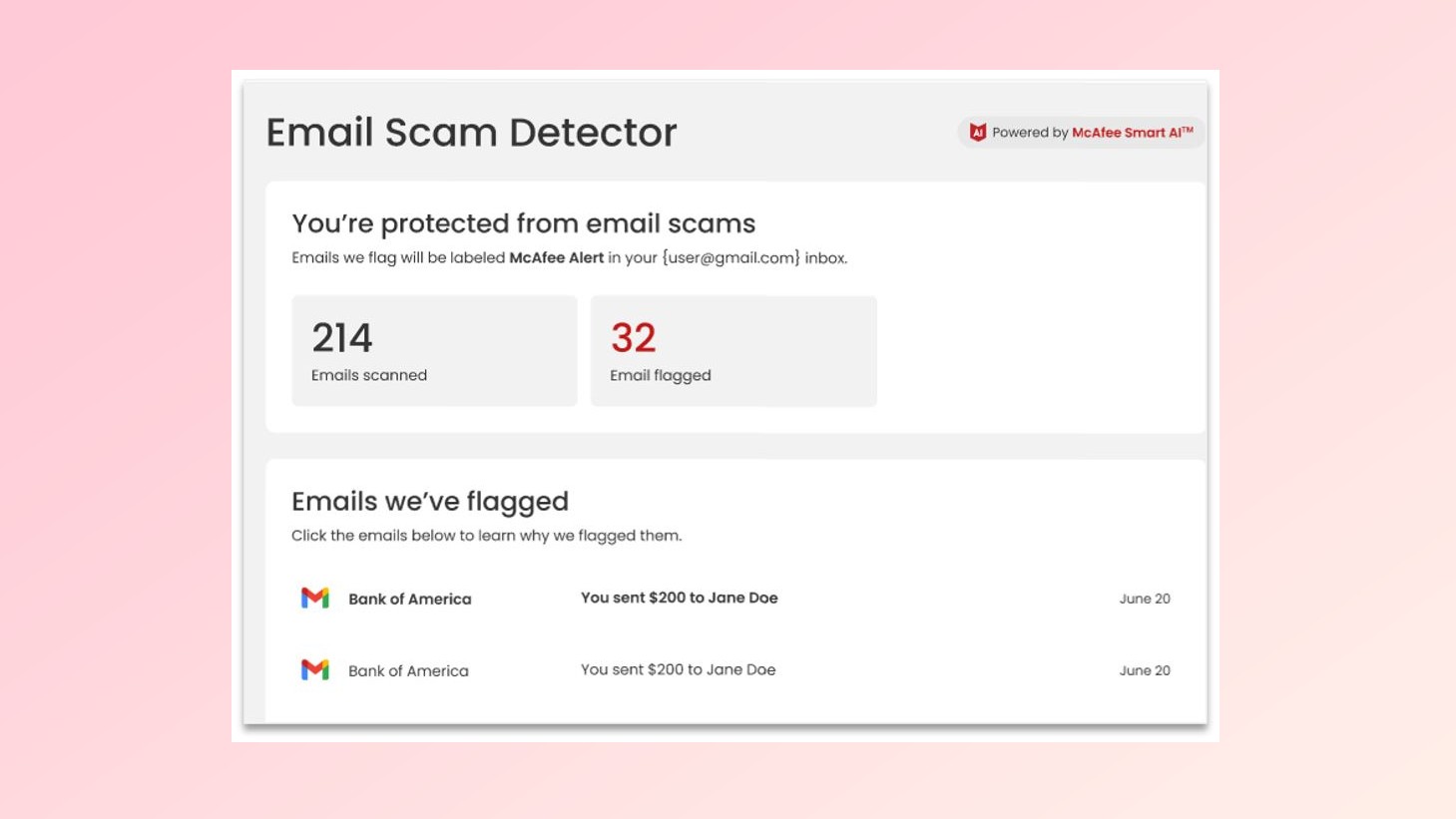
The newest of the three, McAfee Scam Detector, is not something the company will charge extra for or only include with its high-end security suites. Call it the democratization of scam protection, McAfee’s scam protection will be part of all of the company’s security products because it’s considered fundamental protection.
As an opening blow in the AI cold war, McAfee’s technological emphasis was on stopping phishing scams that are after your login credentials or personal data.
Today, Scam Detector goes a lot further by fighting fire with fire with AI techniques to recognize and stop a wide variety of computer-generated criminal scams. McAfee machine learning experts used thousands of known online scams to train its AI model and develop its detection algorithms to counter more personal and directed scams with a flexible technique that’s able to spot all kinds of scams and frauds in a crowd.
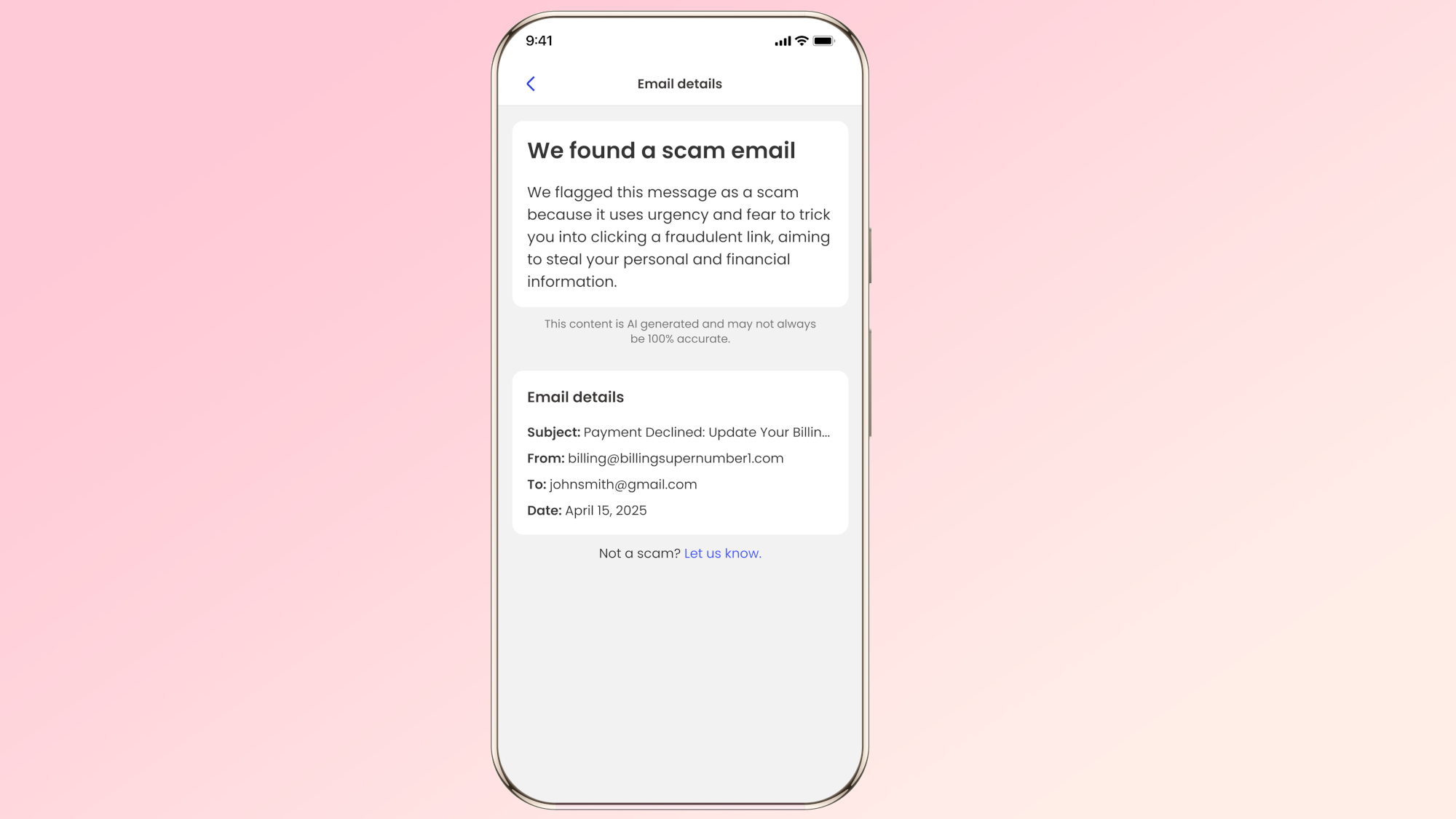
Fully automatic, the predictive model runs 24/7 in the background looking for the telltale signs of AI scams. It doesn’t need a chat window for instant (or nearly so) analysis of suspect items and the good news for the impatient among us, including me, is that it all works quickly because the AI processing is done locally and not online. This works especially well on one of the best AI laptops with an NPU.
The responses are generally completed in near real time but analyzing a video for AI scams might take as much as four seconds, not half a minute as is the case with some of the others.

Whether it’s text, an email or video, whenever something enters the computer with a recognizable scam component or pattern, the security software detects it, flags it and blocks its execution before it can unleash its dangers. McAfee’s Scam Detector was still being finished back when I ran my scam tests with the others but after seeing it in action myself, I was very impressed with how quick and thorough it was.
AI is a powerful tool in fighting online scams
The bottom line for scams today is that they are the inevitable result of a free, open and inherently uncontrollable online world. There’s no avoiding them, but you can fight back and turn the tables by aiming AI right back at them. The best scam detectors can put up a fight against all sorts of online rip offs, although for the time being you might have to be a little patient for a verdict.
More from Tom's Guide
- 7 online scams that can leave you broke, exposed, and feeling helpless — how to stay safe
- This spyware is stealing photos on iPhone and Android — protect yourself now
- Over half a million people impacted by major data breach — full names, SSNs, financial data and more exposed
Brian Nadel is a freelance writer and editor who specializes in technology reporting and reviewing. He works out of the suburban New York City area and has covered topics from nuclear power plants and Wi-Fi routers to cars and tablets. The former editor-in-chief of Mobile Computing and Communications, Nadel is the recipient of the TransPacific Writing Award.
You must confirm your public display name before commenting
Please logout and then login again, you will then be prompted to enter your display name.


